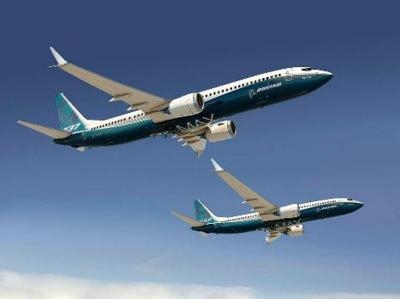Airbus A Bit Less Bullish On The Number Of Airplanes, But Forecasts Need For More Than 500,000 New Pilots
Worldwide demand for new commercial airliners will climb to 39,620 aircraft over the next 20 years, an increase of 4.1 percent over last year's forecast. That's according to Boeing, which released its annual Current Market Outlook (CMO) on the first day of the 2016 Farnborough International Airshow. The estimated total value of those new airplanes will be $5.9 trillion.

"Despite recent events that have impacted the financial markets, the aviation sector will continue to see long-term growth with the commercial fleet doubling in size," said Randy Tinseth (pictured), vice president of Marketing, Boeing Commercial Airplanes. "We expect to see passenger traffic grow 4.8 percent a year over the next two decades."
The Airbus forecast, also released at on the opening day at Farnborough, is a bit less bullish on the number of aircraft that will be needed. According to the Airbus forecast, in the next 20 years (2016-2035), passenger traffic will grow at an average 4.5% a year, driving a need for over 33,000 new aircraft above 100 seats (32,425 passenger & 645 freighters greater than 10 metric tons) worth $5.2 trillion. By 2035, the world’s aircraft fleet will have doubled from today’s 19,500 aircraft to almost 40,000. Some 13,000 passenger and freighter aircraft will be replaced with more fuel efficient types.
Boeing says the single-aisle market will be especially strong, with low-cost carriers and emerging markets driving growth. 28,140 new airplanes will be needed in this segment, an increase of more than 5 percent over last year.

"There's no question the heart of the single-aisle market is around the new Boeing MAX 8 and the current 737-800. Airplanes that size already account for 76 percent of the global single-aisle backlog, and our products have the clear advantage in that space."
Airbus forecasts a need for over 23,500 new aircraft worth $2.4 trillion. This represents 71 percent of all new units. Asia Pacific will take 39 percent of these deliveries.
On the widebody side, 9,100 airplanes are in the forecast, with a large wave of potential replacement demand in the 2021- 2028 time frame. Boeing projects a continued shift from very large airplanes to small and medium widebodies.
Airbus also forecasts a trend towards higher capacity aircraft and forecasts a requirement for over 9,500 widebody passenger and freighter aircraft over the next 20 years, valued at some $2.8 trillion. This represents 29% of all new aircraft deliveries and 54% by value. Most widebody deliveries (46 percent) will be in the Asia Pacific region.

With cargo traffic forecasted to grow at 4.2 percent per year, Boeing projects the need for 930 new freighters and 1,440 converted freighters.
“While established European and North American markets continue to grow, Asia-Pacific is the engine powering growth in the next 20 years. China will soon be the world’s biggest aviation market and together with emerging economies, further population concentration, and wealth creation, together these will help to fuel strong air traffic growth,” said John Leahy, Airbus Chief Operating Officer, Customers. “We are ramping up production to meet market demand for our leading aircraft products and we will also ramp up our customer service offerings to meet the increasing demands of air transportation.”
Airbus’ global services business is set to expand further as the next 20 years sees a requirement for some one million pilots and engineers (560,000 new pilots, 540,000 new engineers) to fly the and maintain the new aircraft.
(Source: Boeing and Airbus news releases. Images from file)
 Unfortunate... ANN/SportPlane Resource Guide Adds To Cautionary Advisories
Unfortunate... ANN/SportPlane Resource Guide Adds To Cautionary Advisories ANN FAQ: Turn On Post Notifications
ANN FAQ: Turn On Post Notifications ANN's Daily Aero-Term (04.29.24): Visual Approach Slope Indicator (VASI)
ANN's Daily Aero-Term (04.29.24): Visual Approach Slope Indicator (VASI) ANN's Daily Aero-Term (04.28.24): Airport Marking Aids
ANN's Daily Aero-Term (04.28.24): Airport Marking Aids ANN's Daily Aero-Linx (04.28.24)
ANN's Daily Aero-Linx (04.28.24)





